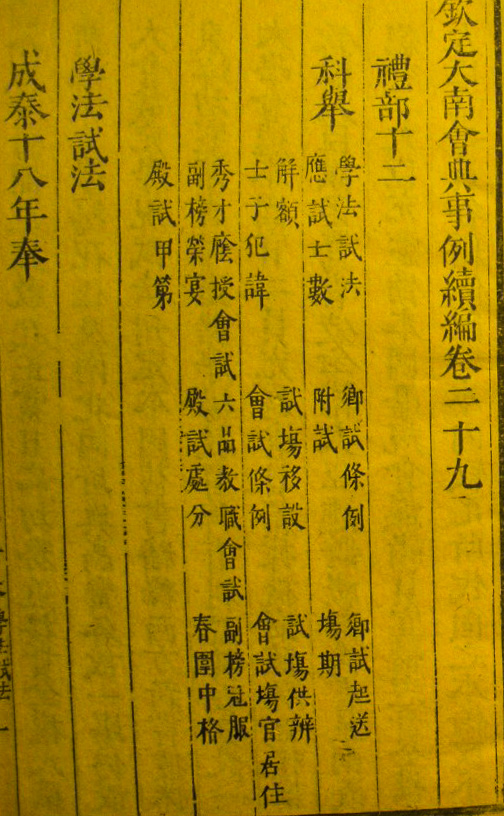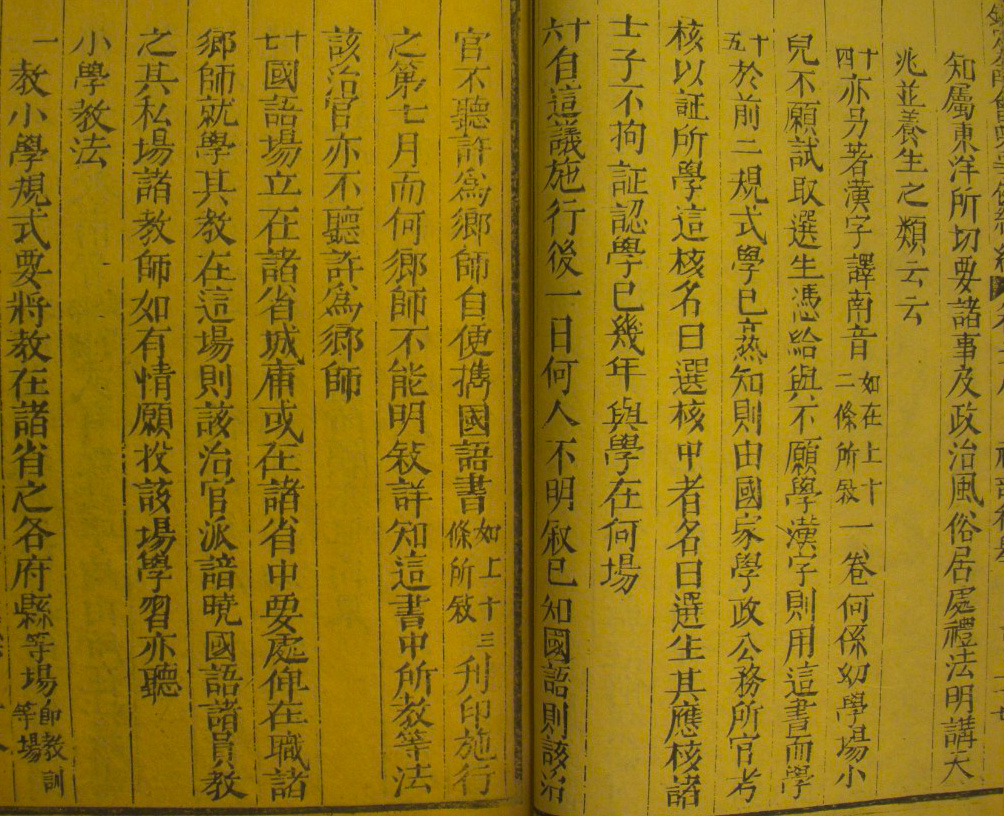Read any book on modern Vietnamese history, and it will glorify a reformist school that enjoyed a brief existence in Hanoi in 1907 – the Tonkin Free School (Đông Kinh nghĩa thục 東京義塾). This school is credited with being the first to teach about “modern” (i.e., Western) subjects, and to promote the use of the vernacular language, as transcribed in a Romanized script (chữ quốc ngữ), instead of classical Chinese.
Meanwhile, none of the authors of any of those books will cite the Addendum to the Imperial Commissioned Collected Statues and Regulations of the Great South (Đại Nam hội điển sự lệ tục biên 欽定大南會典事例續編), a compilation of Nguyễn Dynasty edicts and orders.
However, that text demonstrates that the Nguyễn Dynasty was just as eager to bring about the kind of linguistic and intellectual reforms that the Tonkin Free School was.
But what is more important is that while the Tonkin Free School only taught a few people in Hanoi for a few months, the Nguyễn Dynasty emperor at that time, Emperor Thành Thái sought to bring reforms to the entire country, and he decided to do this in the year before the Tonkin Free School was established.

In the early twentieth century there were three levels of schools in the Nguyễn Dynasty realm: introductory schools, elementary schools, and middle schools.
The introductory schools were established by villages, while the other two schools were established by the dynastic government.
Emperor Thành Thái stated in an order that he issued in the 18th year of his reign (1906) that parents could decide if they wanted their children in introductory schools to follow a “Hán character” 漢子 (i.e., Classical Chinese) or a “Southern sound” 南音 (i.e., vernacular Vietnamese) curriculum.
For those who followed the Hán character curriculum there was to be a textbook created that would introduce Hán characters at increasing levels of difficulty and that was to contain a list of the characters used in the text, as well as their Romanized transcriptions and definitions in vernacular Vietnamese.
Further, in creating this text, Emperor Thành Thái ordered that examples or analogies to ancient history should be supplemented with examples or analogies to contemporary history. (摭古史之譬諭,而今史有與相合者增繼之)
In other words, Emperor Thành Thái had the idea to modernize classical Chinese scholarship in Vietnam to make it more relevant for the society of his day.

Meanwhile, as for those who followed the “Southern sound” curriculum, a Romanized textbook was to be created for them that would introduce them to basic information about Indochina, its administration, customs, etc.
In addition to that though, there was to be another textbook created that translated from classical Chinese to vernacular Vietnamese the kind of information that students who were studying for the civil service examination needed to know. This translation was intended for students who did not wish to take the civil service exams, but it was meant to educate them about the kind of information that those who were taking the civil service exams were learning.

Now if we look at the Wikipedia entry for Emperor Thành Thái, we will find a very different (and a very Vietnamese nationalist) narrative of this period. However, none of that information there is based on anything that is in the Addendum to the Imperial Commissioned Collected Statues and Regulations of the Great South (Đại Nam hội điển sự lệ tục biên 欽定大南會典事例續編).
So what is it based on, and why do people believe it?
The more one looks into the sources from this period, the more one sees that the Nguyễn Dynasty was at the forefront of change.
However, there are two other groups in modern Vietnamese history who sought to claim credit for change: the French and revolutionaries.
Of those two groups, who had the power in the early twentieth century to exert their influence down to the village level? Neither. Only the Nguyễn Dynasty did.
So who transformed early twentieth century Vietnam?

This Post Has 5 Comments
excellent writing !
Yes, more can be done to make the nguyen period a proper subject. Anyone in connection with the descendants of the Nguyen dynasty? I saw a short piece on a princess descended from Bao Dai. But surely they would still have many interesting points of view and family stories that would keep the Nguyen period alive.
I’ve met various people over the years who claim to be Nguyen descendants. I think finding people who are actually descendants rather than people who claim to be descendants would be the first step.
“Hán character” = 漢字。漢子= “man, dude, etc…”, part of what a 大俠 is in ancient China.
Bài này được Nguyễn Quang Duy nhắc đến trong bài « Quốc ngữ và nỗ lực ‘thoát Hán’ của các vua nhà Nguyễn » trên BBC tiếng Việt : https://www.bbc.com/vietnamese/forum-45407297